Why coastal Karnataka is southern India’s ‘Hindutva laboratory’
Hindutva refers to a 100-year-old Hindu supremacist movement that aims to turn a constitutionally secular India into an ethnic Hindu state.
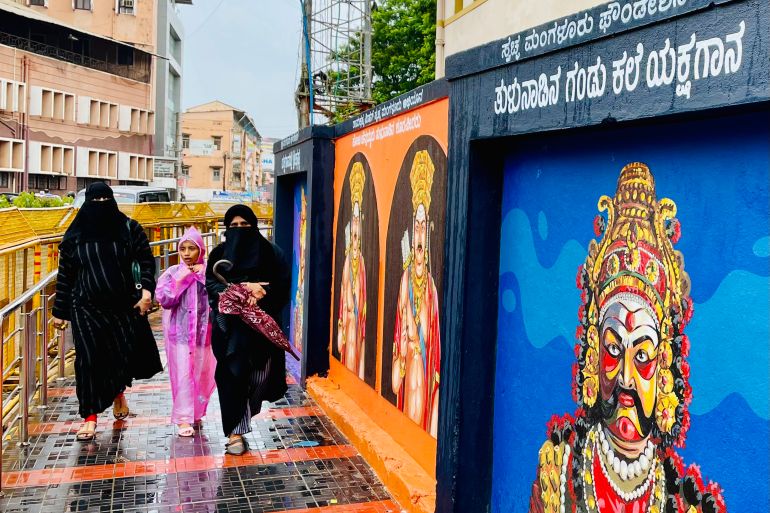
Mangalore, India – Mohammad Ismail was 21 in 2005 when he worked as a salesman at a saree store in the coastal city of Mangalore in the southern Indian state of Karnataka.
One afternoon in May that year, Ismail was on way to Mysore, a heritage city some six hours away, in a bus when he along with several other Muslims were pulled out and brutally attacked by a mob of Hindu vigilantes. Ismail suffered serious injuries and remained bedridden for months.
Keep reading
list of 4 itemsChristians on edge in India’s Karnataka ruled by Modi’s BJP
Muslim women in India allege bias in hiring for jobs
India ruling party has no Muslim MP for the first time in history
The reason? The group he was travelling with included Hindu girls.
“The culture at the time was such that we could not even be found near Hindu girls,” Ismail told Al Jazeera 17 years after the incident.
“Mobs from Hindu right-wing organisations would beat up and lynch any Muslim boy over the pretext of seducing Hindu girls or transporting cows for slaughter, and there would be little action against them.”
‘Karnataka model’
In the nearly 320km-long (199 miles) coastal belt of Karnataka, such attacks are no aberration. They have a steady history of more than 30 years, giving the region the notorious distinction of being southern India’s “Hindutva laboratory”.
Hindutva refers to a 100-year-old Hindu supremacist movement that aims to turn a constitutionally secular India into an exclusive Hindu state. The movement is led by the Rashtriya Swayamsevak Sangh (RSS), the ideological fountainhead of India’s ruling Bharatiya Janata Party (BJP) and dozens of other Hindu right-wing groups across the country.
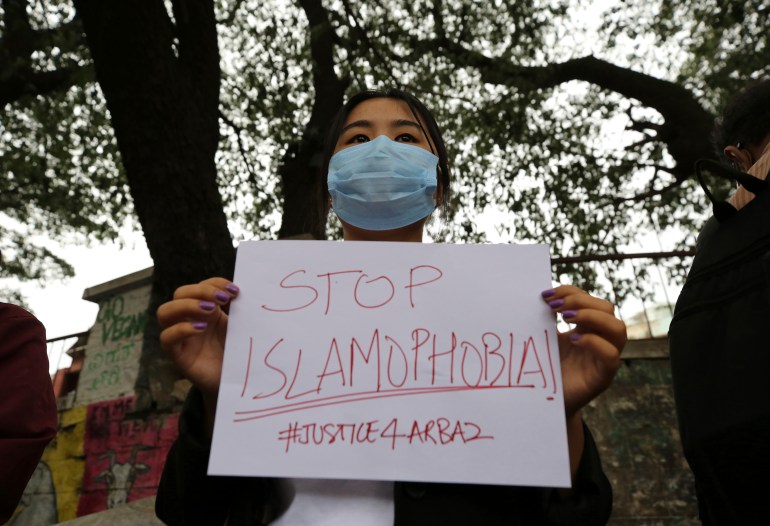
“Everyone talks about the ‘Uttar Pradesh model’ when it comes to Hindutva, but it is actually the ‘Karnataka model’ which has now spread to the rest of the country,” Ismail said.
Over the last few years, Uttar Pradesh, India’s most populous state governed by the BJP, has made headlines for its anti-Muslim policies, including extra-judicial encounters, demolishing homes and businesses, and arresting people for exercising their freedom of speech.
Before Uttar Pradesh, it was the “Gujarat model” that was widely seen as having first spread the Hindutva movement across India with its large-scale violence and apartheid-style segregation of Muslims.
Gujarat is also Prime Minister Narendra Modi’s home state, which he governed for more than a decade before becoming a parliamentarian in 2014.
In 2002, Modi’s government was accused of a state-sponsored pogrom of Muslims following the burning of a passenger train, in which 67 people, most of them Hindu pilgrims, were killed. While officials said more than 1,000 Muslims were killed in the massacre that followed, activists claim the toll was twice as high.
However, the “Karnataka model” has garnered relatively less attention. Yet, since the 1990s, this highly developed and urban region has not just participated in but also led the Hindutva project nationally.

In the last two weeks alone, there have been at least three religiously motivated murders in coastal Karnataka, including two Muslim men and a member of the BJP’s youth wing.
Responding to the Hindu man’s murder, the BJP chief minister of the state said he would implement a “Yogi model” in the state, referring to his counterpart in Uttar Pradesh, Yogi Adityanath, a saffron-robed monk known for his anti-Muslim policies in India’s most populous state.
Another Karnataka minister was even more direct. He said the southern state would “go five steps ahead of Uttar Pradesh” and was ready to even carry out extrajudicial killings of the accused.
Earlier this year, the state made global headlines over a controversial ban on hijabs in schools and colleges.
The state has also banned cow slaughter and introduced an anti-conversion law that makes interfaith marriages a matter of legal scrutiny. Many BJP politicians have called for a boycott of Muslim businesses.
For close observers of Karnataka’s politics, these events are no coincidence.
“None of these issues erupted sporadically … The Sangh Parivar has worked on all of these issues meticulously over decades in this region,” Rajaram Tolpadi, retired professor of political science at Mangalore University, told Al Jazeera.
Sangh Parivar refers to India’s many Hindutva organisations controlled by the RSS.
While the Hindi-speaking northern Indian states are considered the natural support base of the BJP, electoral success in southern India had evaded the party until 2008 when it came to power in Karnataka.
Even now, Karnataka is the only southern state where the BJP is in power – a political success that came after decades of communal polarisation and Hindu consolidation.
It was in Karnataka’s Udupi town in 1985 that a “Dharm Sansad” (religious parliament) had called for the opening of the disputed Babri mosque – a 16th-century Mughal-era structure that Hindu right-wing groups claim was built on the exact site where Hindu god Ram was born.
The mosque was demolished by a Hindu mob seven years later, leading to religious violence across India in which at least 2,000 people, most of them Muslims, were killed.
In 2019, India’s Supreme Court handed over the site to a trust controlled by the federal government to build a Ram temple at the site. Muslims were given land to build a mosque 25km (15 miles) away.
In August 2020, Modi himself presided over a religious ceremony to launch the construction of the temple.
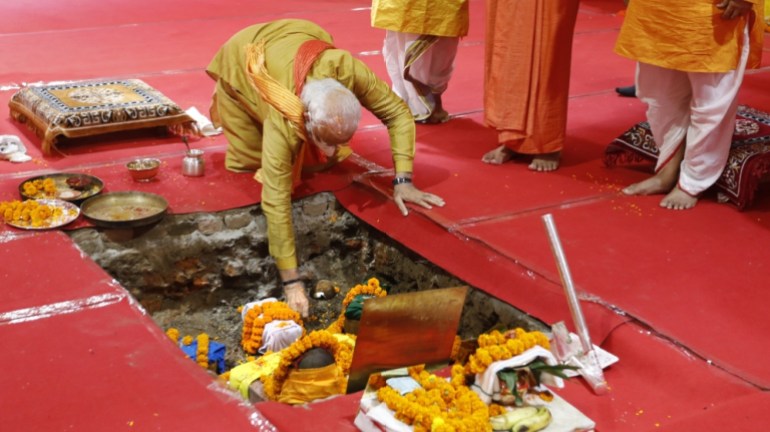
‘Muslim hatred is public culture here’
Karnataka does not fit the stereotype of backwardness, unemployment and illiteracy often associated with a “bigoted” society. The state has one of the lowest unemployment rates in the country, a higher-than-national average literacy rate, and boasts of Bengaluru, the Silicon Valley of Asia, as its capital.
Since the 1980s, Bengaluru’s thriving IT industry has attracted talent from across the country. Global software giants and almost half of Indian unicorns have offices there. With the first pubs in India, high-rise corporate offices and gated apartments for the city’s upper middle-class, Bengaluru is as cosmopolitan as it gets.
Even coastal Karnataka, the hotbed of Hindutva, is not particularly backwards, either. On the face of it, the region is urban, multicultural, multilingual and wealthy.
The region’s main city of Mangalore is a national education hub with some of the leading engineering and medical institutions located there.
Even during the monsoons, the city is bustling with students huddled in buses, autorickshaws, bus stands and coffee shops. Billboards advertising universities and colleges with photographs of their top-ranking students dot the busy roads.
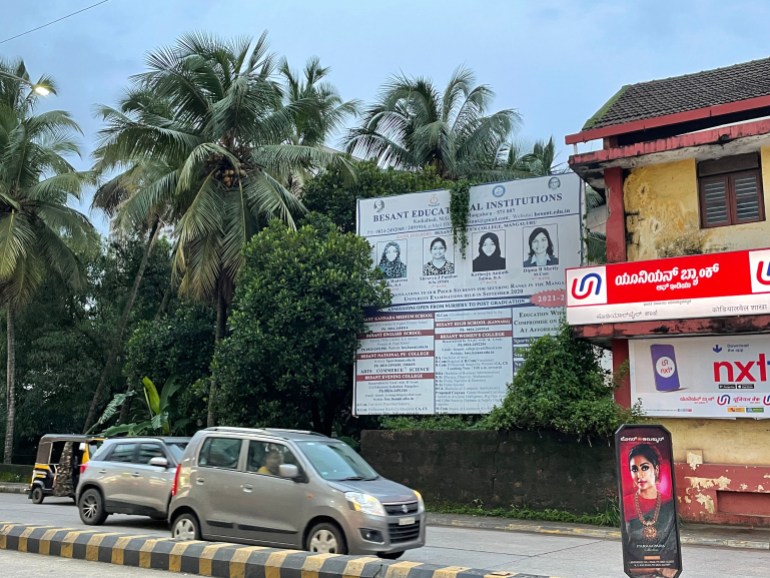
Malls and restaurants serving Mangalorean, north Indian, Keralite, Goan and Arabic cuisines stand in seeming harmony with centuries-old temples scattered around the city.
“There is overt modernisation but underneath, coastal Karnataka is a deeply parochial society. People here are educated and settled in places like the United States and Dubai, but their worldview remains unchanged – the cosmopolitanism they bring back is limited to money,” Tolpadi told Al Jazeera.
One of the earliest signs of a more aggressive Hindutva was seen in this region in 2009 when a group of young women in a pub in Mangalore was beaten up for violating “Indian values” by dozens of activists belonging to a far-right Hindu group, called the Sri Ram Sene.
“Not just moral policing, hatred for Muslims is public culture here – one which they have successfully exported throughout the state and the country,” Tolpadi said.
The local media, for example, refers to Muslims and Christians as “anya Bharatiya” (the other Indians) or “anya komu” (the other religion).
“Some time back, a Hindu girl and a Muslim boy were attacked and handed over to the police in a case of moral policing by a Hindu group. The next day, the local media said a boy from the ‘other community’ was caught with a girl,” Naveen Soorinje, journalist and author of a book in Kannada language on communalism in Karnataka, told Al Jazeera.
“They do not even mention ‘Muslim’ because it is assumed that both the reporter and the reader is Hindu, and the ‘other community’ is Muslim.”
Gulf money and the Muslim ‘other’
The Muslims of coastal Karnataka, locally known as the Byari community – a word that translates to trade or business in the local Tulu dialect – are known to have lived in this region for more than a thousand years.
Muslims constitute nearly 14 percent of India’s 1.35 billion population. In coastal Karnataka, however, they form about 24 percent of the population.
The community benefitted from the opening up of the Gulf economies to foreign workforces in the 1970s. They own businesses such as malls, hospitals, construction and educational institutions in the region.
Across the region, hijab-wearing girls and women, who recently found themselves at the receiving end of global attention, are seen driving big cars, walking on the roads alone, going to colleges, or hanging out with friends.

“Other communities also went to the Gulf, but Muslims from Kerala and coastal Karnataka went in large numbers,” Mohammad Kunhi, Karnataka state secretary of the Jamaat-e-Islami Hind, a pan-Indian Muslim socioreligious organisation, told Al Jazeera.
“This brought a lot of prosperity and visibility for the Muslim community – flashy cars, new clothes, new technology, more money – which, in turn, created a sense of economic jealousy.”
Mangalore-based activist Vidya Dinaker says the Muslims of coastal Karnataka are not the quintessential oppressed community.
“They are visible, they go to restaurants and malls, they are educated, they drive good cars, they have voices in the otherwise highly communal local media …They are not powerless, so there is a pushback and therefore, there is a good fight.”
The Hindu right-wing forces here manufacture the fear of the Muslim “outsider” alleging they plan to take over Hindu land, businesses, and even their women through marriages and conversion.
The prosperity of the Byari community also caused rivalry with other trading communities, mainly the Konkanis and the Gowd Saraswat Brahmins, the two dominant Hindu castes in the region.
“Whenever there is a riot and Muslim shops are attacked, it is these people who benefit,” said Soorinje. “So, the funding and ideological leadership for Hindutva has come from them.”
‘Unifying’ Hindus
Meanwhile, a parallel project to “unify” Hindus divided by castes also continued in Karnataka. Experts say the RSS since the 1940s has been infiltrating schools, colleges, media and local neighbourhoods with one clear message: “Hindu Navella Ondu”, or ‘Hindus are one’ in Kannada.
Two political developments in the 1970s helped the RSS. First, a popular movement against the imposition of the state of emergency by the Congress government in 1975 was spearheaded in the region by the RSS, which used the anger against the then-ruling party to push the Hindutva agenda.
Second, the land reforms enacted by the Congress further antagonised the dominant Hindu caste groups whose lands were taken and redistributed to people from the less privileged castes. Moreover, sustained social engineering even brought the lower castes closer to the RSS than the Congress.
“The Billavas are numerically the dominant caste in this region who have been economically, socially and educationally backward,” Phani Raj, Udupi-based professor and activist, told Al Jazeera.
“But the RSS worked on their social inclusion and they have become the stormtroopers of Hindutva who create terror in the society. For a community with little identity, being called a Hindu and given space and responsibility by the upper castes has meant largely unquestioned devotion to the Hindutva project.”
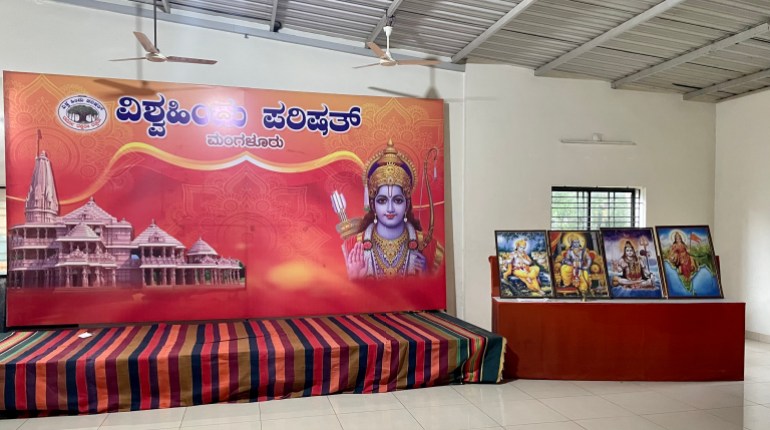
Today, it is no coincidence that a large section of local Hindu right-wing leadership is occupied by men from the Billava community. At the office of the Vishwa Hindu Parishad (VHP), a far-right Hindu organisation, young boys sit idly on a breezy morning.
Most of them have not studied beyond high school and have no secure source of employment. They are drivers, medical representatives, contractual staff working in local banks, and security guards. For them, being a part of the Hindutva project is a form of identity assertion – one that hinges on Muslim hate.
A young medical representative who did not want to be identified said his job does not require him to be working all day.
“I have a lot of free time and I devote that to Hindutva … Those with 9-5 jobs cannot do what we do because the idea is to be present immediately whenever there is a case of cow slaughter or ‘love jihad’,” he told Al Jazeera.
“If we do not do this job for Hindutva, who will?”